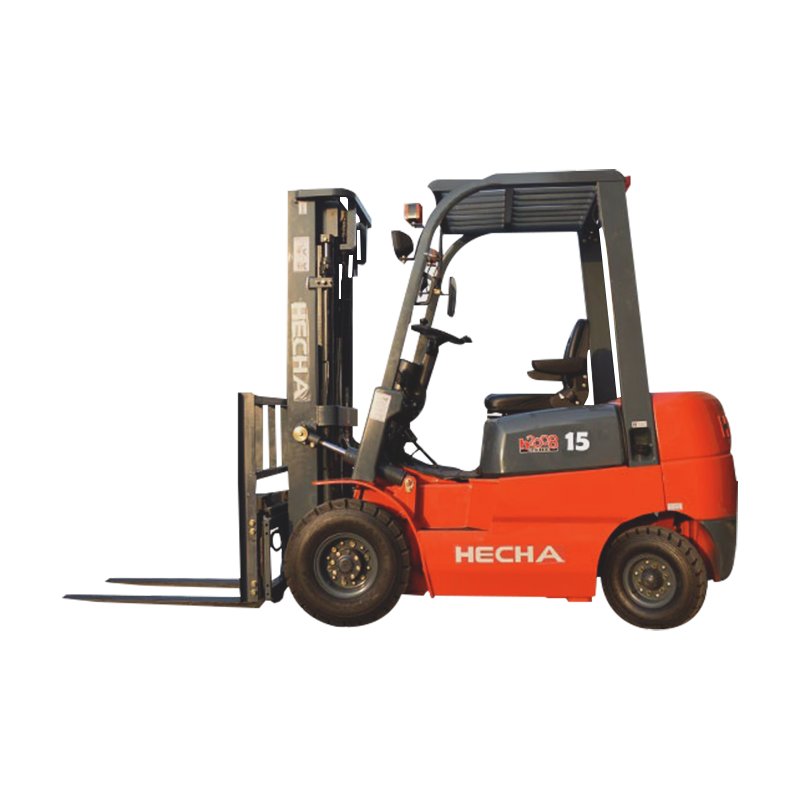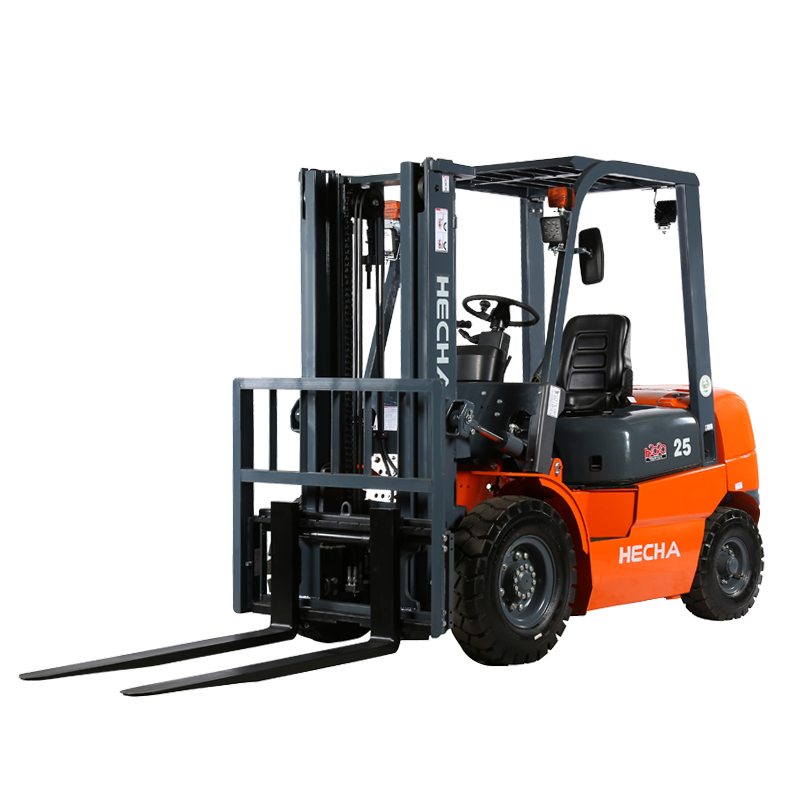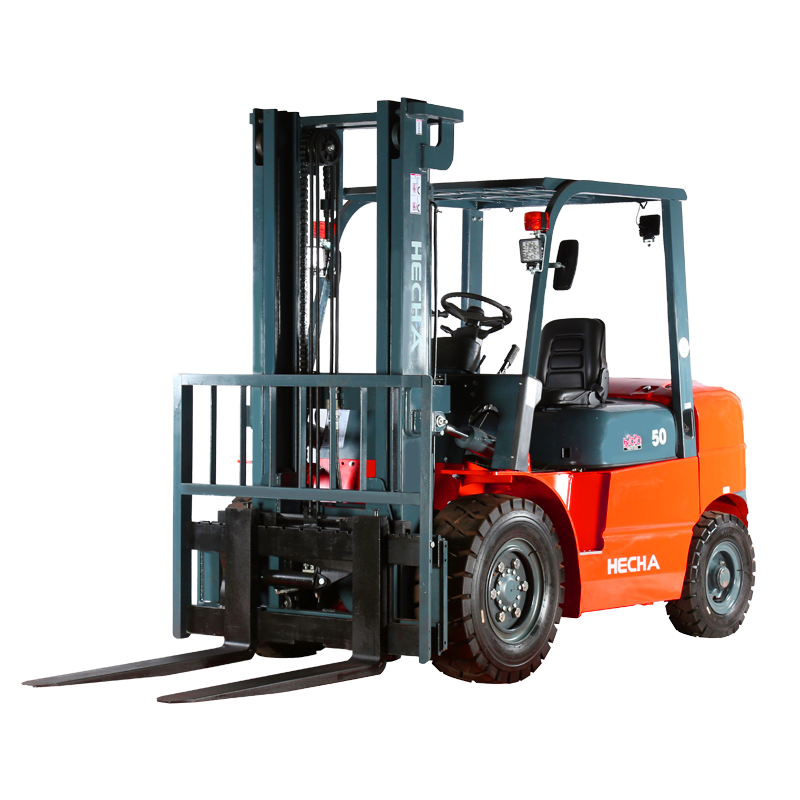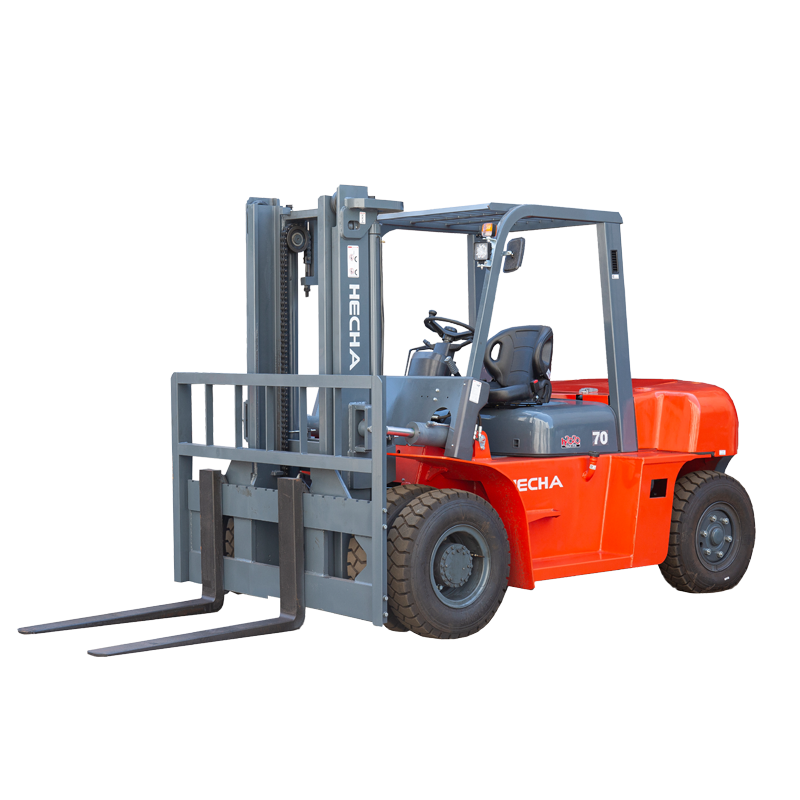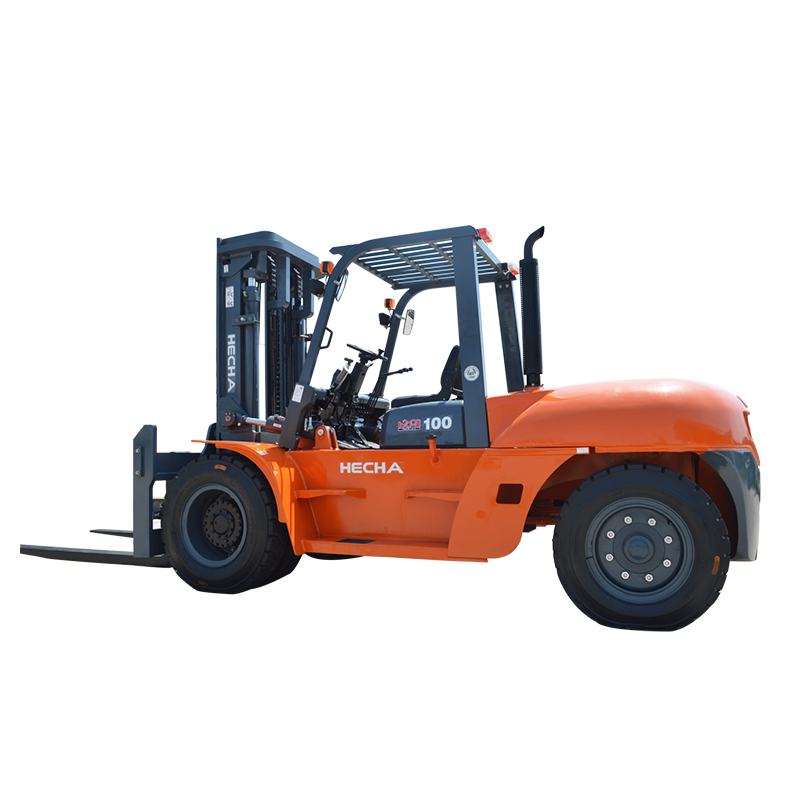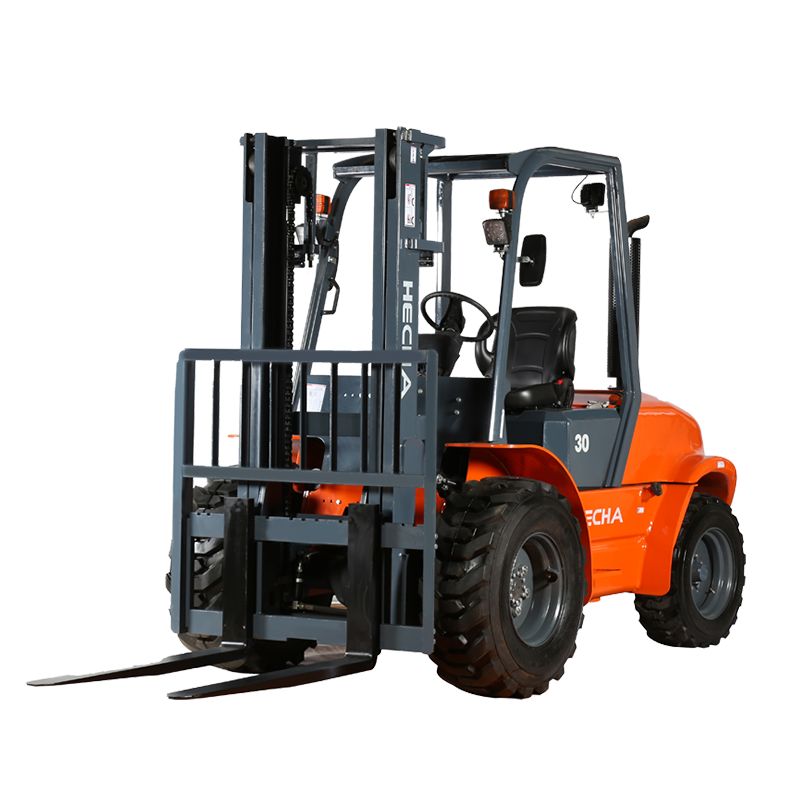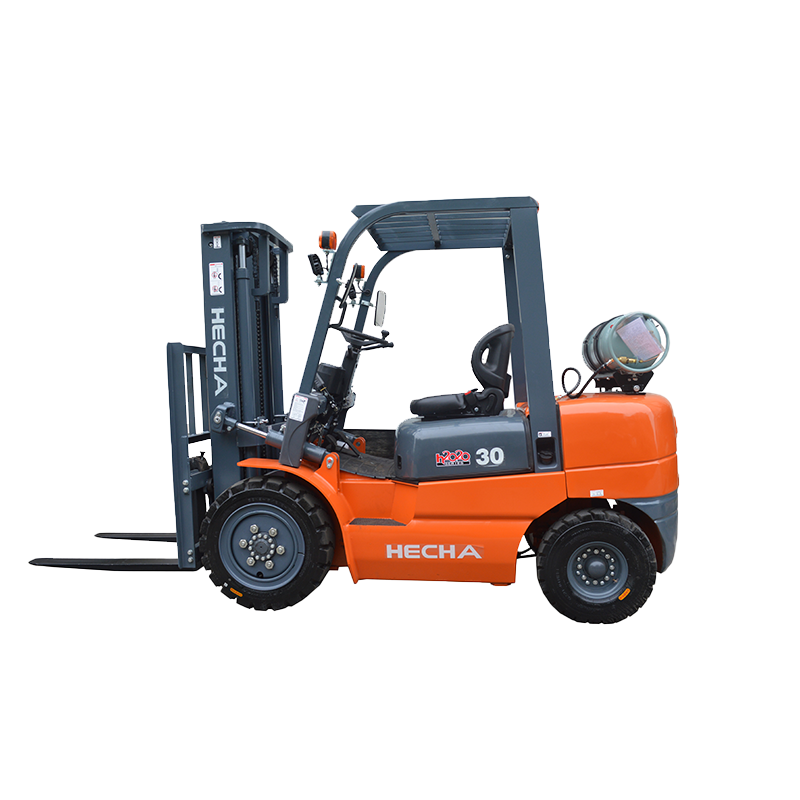The selection of a rough terrain forklift is a critical decision that directly impacts the efficiency, capability, and cost-effectiveness of operations in demanding environments. At the heart of this decision lies a fundamental choice between two distinct drivetrain systems: two-wheel drive (2WD) and four-wheel drive (4WD). For businesses in construction, agriculture, lumber, and other sectors that operate beyond smooth, paved surfaces, understanding the nuances of this choice is paramount.
Understanding the Core Drivetrain Configurations
To comprehend the differences in performance and application, one must first understand the basic mechanical architecture of each drivetrain system. The primary distinction is simple in concept but profound in its operational consequences.
A 2wd roungh terrain forklift channels the engine’s power exclusively to two wheels, almost always the rear ones. This setup is mechanically simpler, involving a drivetrain that transmits power from the engine through a transmission and a drive shaft to a single differential that turns the rear axle. This design prioritizes simplicity and efficiency on surfaces that offer reasonable traction. The focus is on providing ample power for lifting and transporting loads, relying on the inherent stability of the rear-driven wheels and the grip of its large, pneumatic tires to navigate uneven ground.
In contrast, a 4wd rough terrain forklift employs a more complex system that distributes power to all four wheels. This requires additional components, including a transfer case and a front differential, to split the engine’s power between the front and rear axles. The key advantage of this system is the multiplication of traction. By having all four wheels capable of propelling the machine, the forklift gains significantly enhanced grip and climbing ability, especially on soft, loose, or steeply inclined surfaces where a 2wd system might struggle with wheel spin.
Key Performance Differentiators in Rough Terrain Applications
The choice between 2WD and 4WD extends far beyond a simple specification sheet; it dictates the very capabilities and limitations of the machine in the field. The performance gap becomes most apparent when the terrain becomes challenging.
Traction and Climbing Ability
This is the most significant differentiator. A 2wd roungh terrain forklift relies on the weight distribution over the drive wheels and the aggressive tread of its tires to find grip. On firm, unpaved surfaces like compacted soil, gravel, or hard-packed clay, it performs admirably. Its ability to traverse mildly uneven ground and slight inclines is typically sufficient for many tasks. However, its limitations become clear on soft ground, such as deep mud, loose sand, or fresh construction sites with loose topsoil. In these conditions, the rear wheels can easily lose traction and spin, rendering the machine stuck. Similarly, on steep grades, especially when laden, the weight shifts away from the drive wheels, reducing their grip and climbing efficacy.
A 4wd system is fundamentally designed to overcome these challenges. By engaging all four wheels, it effectively doubles the potential contact points for traction. This makes it vastly superior in low-traction scenarios. It can power through muddy ruts, climb over loose piles of debris, and ascend steeper inclines with confidence, even with a full load. The distributed power ensures that if one or two wheels lose grip, the others can continue to pull the machine through. For operations that are consistently faced with soft ground conditions or steep grades, the 4WD advantage is not just an improvement; it is a necessity.
Maneuverability and Stability
While both types of forklifts are designed for off-road use, their drivetrain influences their behavior on the ground. A 2wd roungh terrain forklift, with its simpler drivetrain, can sometimes feel slightly more nimble in tight spaces on firm ground. The turning radius is not necessarily smaller, but the handling can be more straightforward.
A 4wd forklift, due to the front wheels being driven, can exhibit different handling characteristics. When the 4WD system is engaged, the front wheels are pulled by the drivetrain, which can lead to a slightly heavier steering feel, especially on hard surfaces. However, this same characteristic contributes to exceptional stability when climbing and descending slopes. The pulling action of the front wheels helps to keep the machine tracking straight on inclines, reducing the risk of sideways slippage. This enhanced stability is a critical safety feature when working on uneven or sloped terrain.
Fuel Efficiency and Operational Costs
The mechanical simplicity of a 2wd roungh terrain forklift translates directly into operational efficiency. With fewer drivetrain components to rotate and power, a 2WD model experiences lower mechanical friction and parasitic power loss. This results in measurably better fuel efficiency compared to an equivalent 4WD model operating under similar conditions. For businesses with large fleets or high usage hours, this difference in fuel consumption can represent a substantial and recurring cost saving over the lifetime of the machine.
The 4WD system, with its added weight and complexity, requires more energy to operate. The engine must work harder to turn the additional gears, shafts, and differentials, leading to higher fuel consumption. This is the trade-off for the superior traction and capability. Therefore, if the extra traction of 4WD is not consistently required, the operator is effectively paying a permanent fuel penalty for a capability that is only occasionally used.
Economic and Maintenance Considerations for Buyers
The total cost of ownership extends far beyond the initial purchase price. A thorough financial analysis must consider acquisition costs, long-term maintenance, and repair liabilities.
Initial Purchase Price and Investment
The simpler construction of a 2wd roungh terrain forklift makes it less expensive to manufacture. Consequently, these models almost always carry a lower initial purchase price than a comparable 4WD model. This lower entry cost makes the 2wd configuration an attractive cost-effective solution for businesses operating with capital constraints or for those whose needs do not justify the premium for all-wheel drive. It allows access to the rough terrain capability without the full investment of a 4WD system.
The advanced engineering and additional components of a 4WD system—the transfer case, the front differential, and the associated driveshafts and linkages—command a higher price. This higher initial investment must be justified by the operational demands. For a business where downtime due to poor traction is costly, or where the terrain makes a 2WD machine impractical, the higher price of a 4WD model is a necessary and justified expense.
Long-Term Maintenance and Complexity
Maintenance schedules and potential repair costs are heavily influenced by drivetrain complexity. A 2wd roungh terrain forklift has a more straightforward mechanical system. Routine maintenance typically involves the engine, transmission, and a single drive axle. For mechanics, this system is easier to diagnose, service, and repair. The availability of parts is often wider, and the labor hours required for repairs are generally lower. This translates to reduced downtime and lower long-term maintenance costs.
The 4WD system introduces multiple additional subsystems that require regular service and present potential points of failure. The transfer case fluid and front differential fluid need periodic changes according to the manufacturer’s specifications. The engaging mechanisms for the 4WD system, which can be mechanical, electrical, or hydraulic, can also require maintenance or repair. When issues arise, diagnostics are more complex, repairs often require more specialized knowledge, and the parts themselves are more expensive. This results in a predictably higher total cost of maintenance and a greater risk of prolonged downtime.
The table below provides a simplified comparison of the key economic and performance factors.
| Feature | 2WD Rough Terrain Forklift | 4WD Rough Terrain Forklift |
|---|---|---|
| Initial Cost | Lower | Higher |
| Fuel Efficiency | Higher | Lower |
| Maintenance Complexity | Lower | Higher |
| Traction on Firm Ground | Sufficient | Excellent |
| Traction on Soft/Loose Ground | Limited | Superior |
| Grade Climbing Ability | Moderate | Excellent |
| Ideal Use Case | Improved surfaces, mild slopes, hard-packed soil | Unprepared sites, mud, sand, steep grades |
Identifying the Right Application for Your Needs
Matching the machine to the mission is the ultimate goal. There is no universal “best” choice; there is only the best choice for a specific set of operational parameters.
Ideal Scenarios for a 2wd Roungh Terrain Forklift
The 2wd roungh terrain forklift finds its strongest value proposition in applications where the terrain, while unpaved, is generally stable and well-maintained. Its cost-effectiveness and efficiency shine in these environments. Typical applications include lumber yards with compacted gravel surfaces, agricultural storage and packing facilities, landscaping projects on established sites, and light construction work where the ground is firm. For businesses that primarily operate on what can be described as “improved surfaces”—areas that are unpaved but graded, rolled, and stable—the additional investment in a 4WD system often yields diminishing returns. In these settings, the 2wd roungh terrain forklift provides the necessary ground clearance and tire traction for basic off-pavement work, coupled with lower operating costs, making it a highly efficient and rational choice for material handling tasks that do not involve extreme terrain.
When a 4WD System Becomes Essential
There are clear and distinct operational environments where a 4WD system transitions from a luxury to an absolute requirement. Any industry that routinely works on unprepared, dynamically changing, or inherently low-traction sites must prioritize the 4WD capability. This includes heavy construction sites during the early phases of ground-breaking, where the ground is churned into mud and loose soil. It is critical for industries like mining and quarrying, where navigating loose aggregate and steep ramps is a daily occurrence. In forestry and certain agricultural applications, such as traversing wet, plowed fields, the ability of a 4WD system to maintain momentum and avoid becoming bogged down is indispensable. In these high-demand scenarios, the higher purchase price and operating costs of the 4WD model are offset by its ability to maintain productivity in conditions that would immobilize a 2WD machine. The question is not one of cost, but of fundamental capability.
Making an Informed Decision: A Summary for Buyers
The decision between a 2wd roungh terrain forklift and a 4WD model is a strategic one that balances performance needs against financial realities. The 2wd roungh terrain forklift stands as a testament to efficiency and sufficiency. It is a machine designed for demanding yet predictable environments, offering robust performance on stable, unpaved surfaces while minimizing both initial investment and long-term operational expenses. Its advantages in fuel efficiency and lower maintenance are compelling for cost-conscious operations.
The 4WD rough terrain forklift, conversely, is a tool for conquering uncertainty and challenging geography. Its value lies in its superior traction, stability, and ability to operate where a 2WD machine cannot. This capability comes at a measurable cost, both upfront and throughout its service life.

 English
English 中文简体
中文简体 русский
русский Français
Français Español
Español

